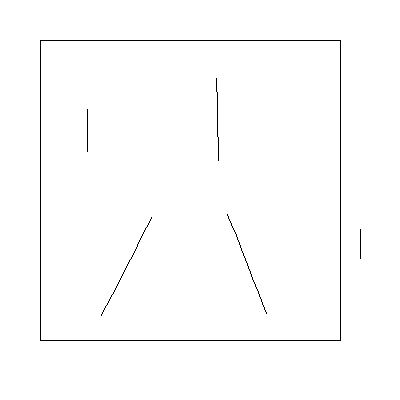

A simple tree layout file. The four long strokes are trees. The small vertical stroke outside the frame defines the wind -- straight up.

The vector field of the wind.

The four generated trees. The top left one is smaller, in proportion with its generating stroke. (Note that the entire tree is scaled down. It has the same number of branches as the larger trees. It even has the same number of dash marks making up each branch part; they're reduced enough to blur together in this rendition.)


The only change in this layout is that the wind is now horizontal.
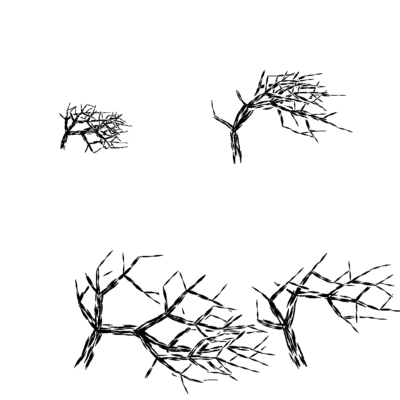
Trees in the horizontal wind. As you see, the trees are not simply bent by the wind (although there is some bending). They grow preferentially in the wind direction. The branches pointing right are longer and have more subbranches; the branches pointing left are withered.
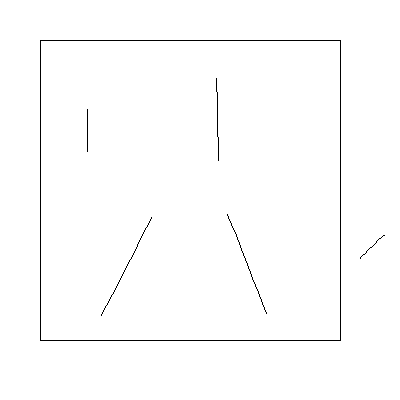
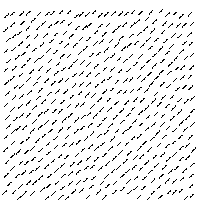
Diagonal wind.
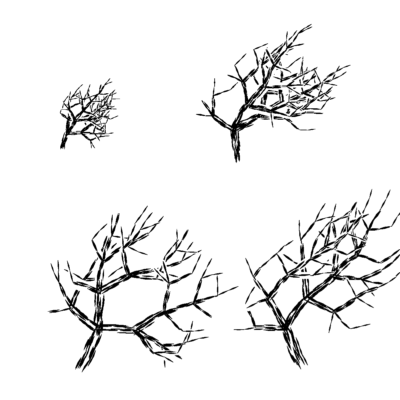
Diagonal trees.
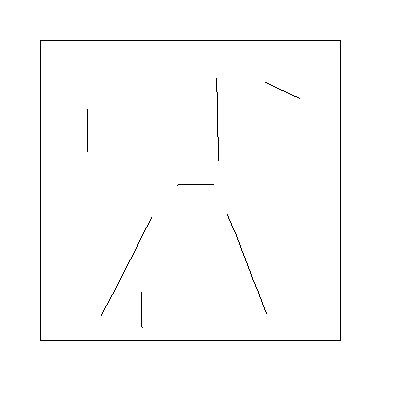
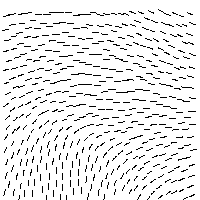
A more interesting wind field. There are now three wind strokes. The wind vector at every point is a weighted average of the three strokes -- weighted by the distance to that stroke. So the bottom of the field is dominated by the vertical stroke; the middle by the horizontal stroke; and the top by the stroke which angles down. In between, the vector shades smoothly between these angles.
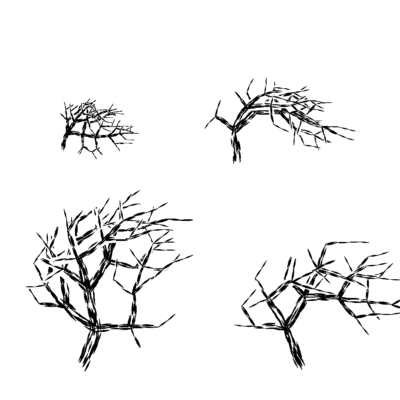
The resulting trees, bending to follow the wind.
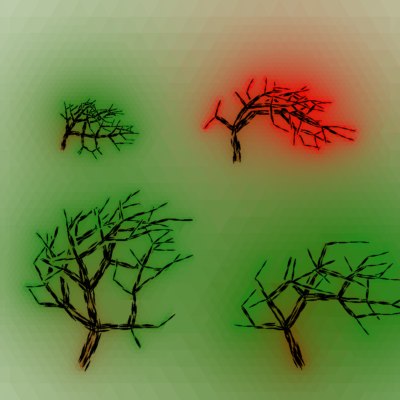
Same trees, with color. Each branch has a color influence -- that is, the color at every point is a weighted average of the color of each branch. By default, the trunk is brown, and branches get progressively greener as they grow. However, the color range is adjustable; the top right tree has red branch-tips, instead of green.
The color influence of the entire tree can also be adjusted. The bottom right tree has a much higher color weighting than the others. Its color "aura" therefore extends farther.
Last updated January 21, 2003.